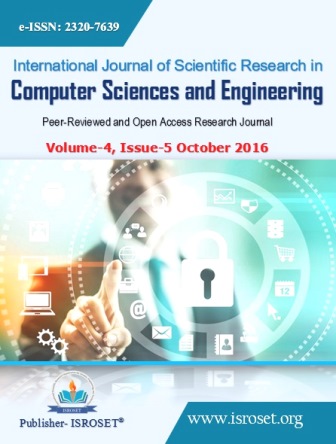Software Fault Detection Using Improved Relief Detection Method
Keywords:
Software, Object Oriented Program, Code, ClassifierAbstract
Fault-prone quests conjecture is probably the majority of conventional in addition to crucial parts within computer software executive. Diagnosis associated with fault-prone quests may be extensively analyzed. A large number of scientific tests used some kind of computer software metrics, including system complexity, size associated with quests, or even object-oriented metrics, in addition to created statistical versions to analyze fault-proneness. Machine-learning approaches are already popular with regard to fault-proneness discovery. Advantages of machine mastering app roaches induce the growth associated with brand-new computer software metrics with respect to fault-prone element discovery. Keeping in mind the end goal to crush, another parameter named remaining fault rate can be displayed. This paper proposes another calculation named improved relief fault detection. The exploratory results give better results as far as exactness than existing system alleviation calculation.
References
B. Kitchenham, “Whats up with software metrics? A preliminary mapping study”, Journal of Systems and Software, Vol.83, pp. 37–51, 2019.
C. Catal, B. Diri, “A systematic review of software fault prediction studies”, Expert Systems with Applications, Vol.36, pp.7346–7354, 2009.
C. Catal, “Software fault prediction: a literature review and current trends”, Expert Systems with Applications, Vol.38, pp.4626–4636, 2011.
T. Hall, S. Beecham, D. Bowes, D. Gray, S. Counsell, “A systematic literature review on fault prediction performance in software engineering”, IEEE Transactions on Software Engineering. Vol.38, Issue.6, pp. 1276-1304, 2012.
J. Ratzinger, M. Pinzger, H. Gall, “EQ-Mine: predicting short-term defects for software evolution”, Fundamental Approaches to Software Engineering, Vol.4422, pp12–26, 2007.
E. Arisholm, L.C. Briand, E.B. Johannessen, “A systematic and comprehensive investigation of methods to build and evaluate fault prediction models”, Journal of Systems and Software, Vol.83, pp.2-17, 2010.
Baljinder Ghotra, Shane McIntosh, Ahmed E. Hassan , “Revisiting the Impact of Classification Techniques on the Performance of Defect Prediction Models”, Software Analysis and Intelligence Lab (SAIL) School of Computing, Queen’s University, Canada , pp.231-144. 2014.
R. Mahajan, SK. Gupta, RK Bedi, “comparison of various approaches of software fault prediction: a review”, international journal of Advanced Technology & Engineering Research, Vol.4, Issue.4, pp.13-16, 2014.
PK. Singh, RK. Panda, OP. Sangwan , “A Critical Analysis on Software Fault Prediction Techniques”, World Applied Sciences Journal, Vol.33, Issue.3, pp. 371-379, 2015.
NK. Rao, RM. Reddy, BK. Rao., "Defect Prediction in Software Entities Classified in Terms of Level Dependencies", International Journal of Scientific Research in Computer Science and Engineering, Vol.1, Issue1, pp.20-25, 2013.
Downloads
Published
How to Cite
Issue
Section
License

This work is licensed under a Creative Commons Attribution 4.0 International License.
Authors contributing to this journal agree to publish their articles under the Creative Commons Attribution 4.0 International License, allowing third parties to share their work (copy, distribute, transmit) and to adapt it, under the condition that the authors are given credit and that in the event of reuse or distribution, the terms of this license are made clear.







